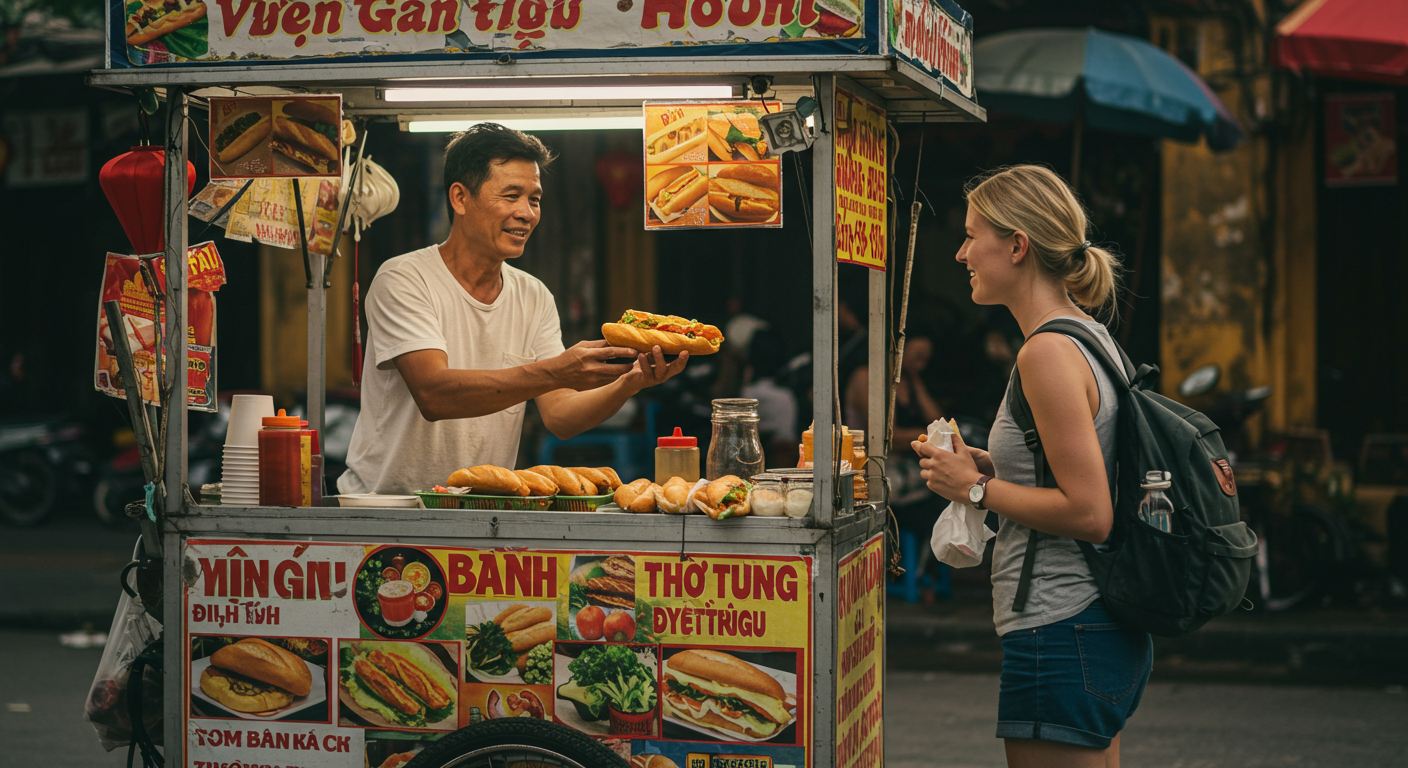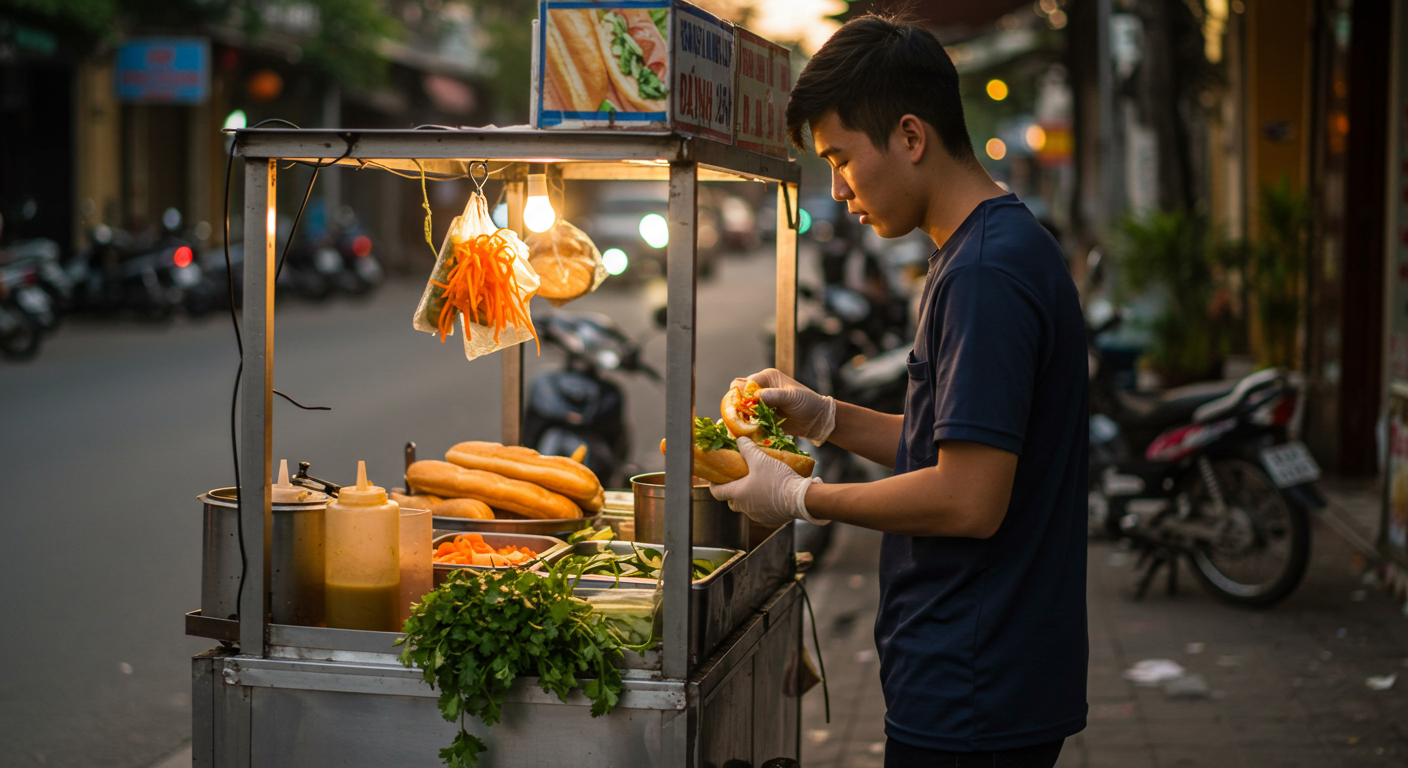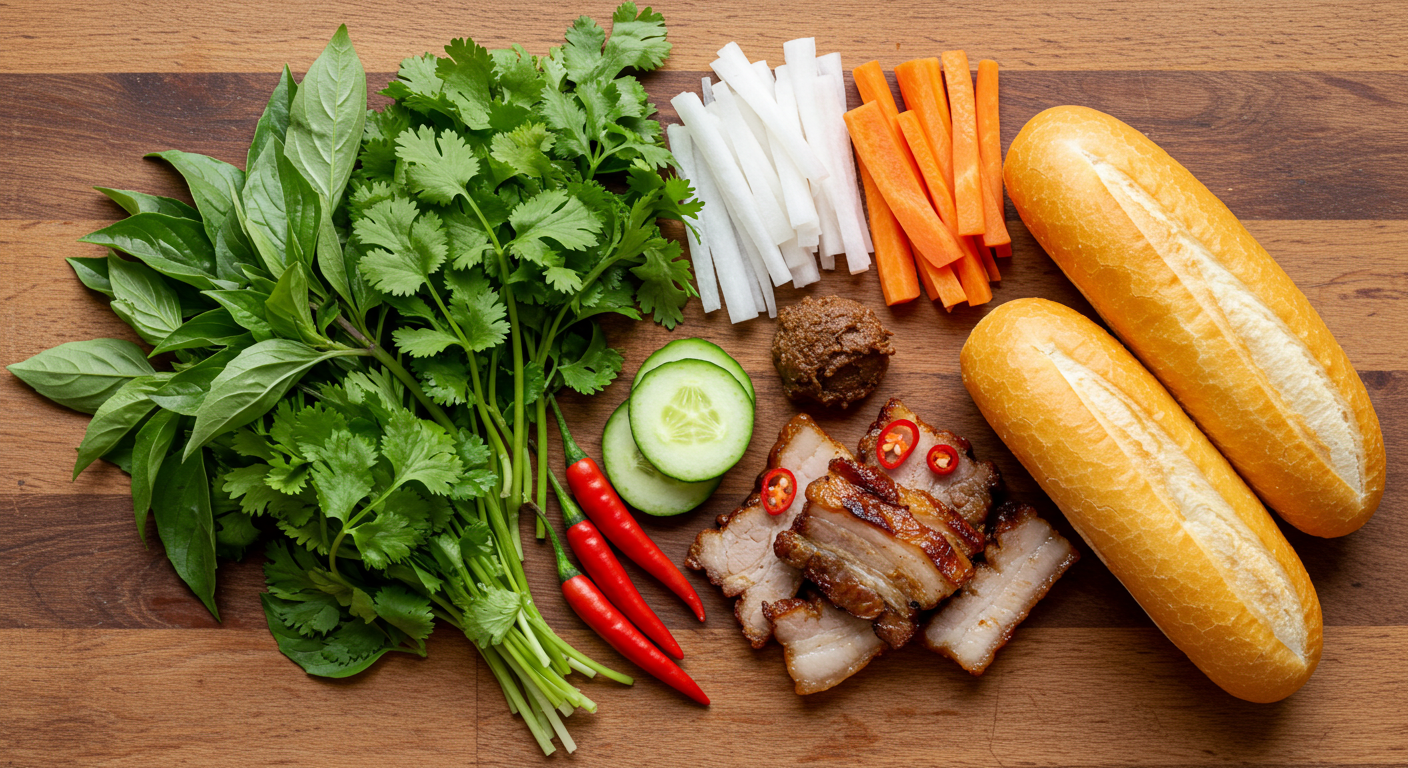
Best Bánh Mì Toppings
Best Bánh Mì Toppings: Elevate Your Vietnamese Sandwich
The bánh mì sandwich is a perfect harmony of flavors and textures, where each component plays a crucial role. While the protein fillings often get the spotlight, it's the toppings and condiments that truly elevate this Vietnamese classic from good to extraordinary. In this guide, we'll explore the essential toppings that make bánh mì one of the world's most beloved sandwiches. To understand the origins of this iconic food, check out our article on the history of bánh mì.
Table of Contents
The Foundation: Pickled Vegetables
No bánh mì is complete without the signature pickled vegetables, known as "đồ chua" in Vietnamese. These provide the essential tang and crunch that cuts through the richness of the meats and spreads that form the base of the sandwich.
Pickled Daikon and Carrot
The classic combination of julienned daikon radish and carrot, quick-pickled in a solution of vinegar, sugar, and salt, is non-negotiable in a traditional bánh mì. The pickling process creates a perfect balance of sweet, sour, and salty flavors while maintaining a satisfying crunch. The vibrant orange and white colors also add visual appeal to the sandwich.
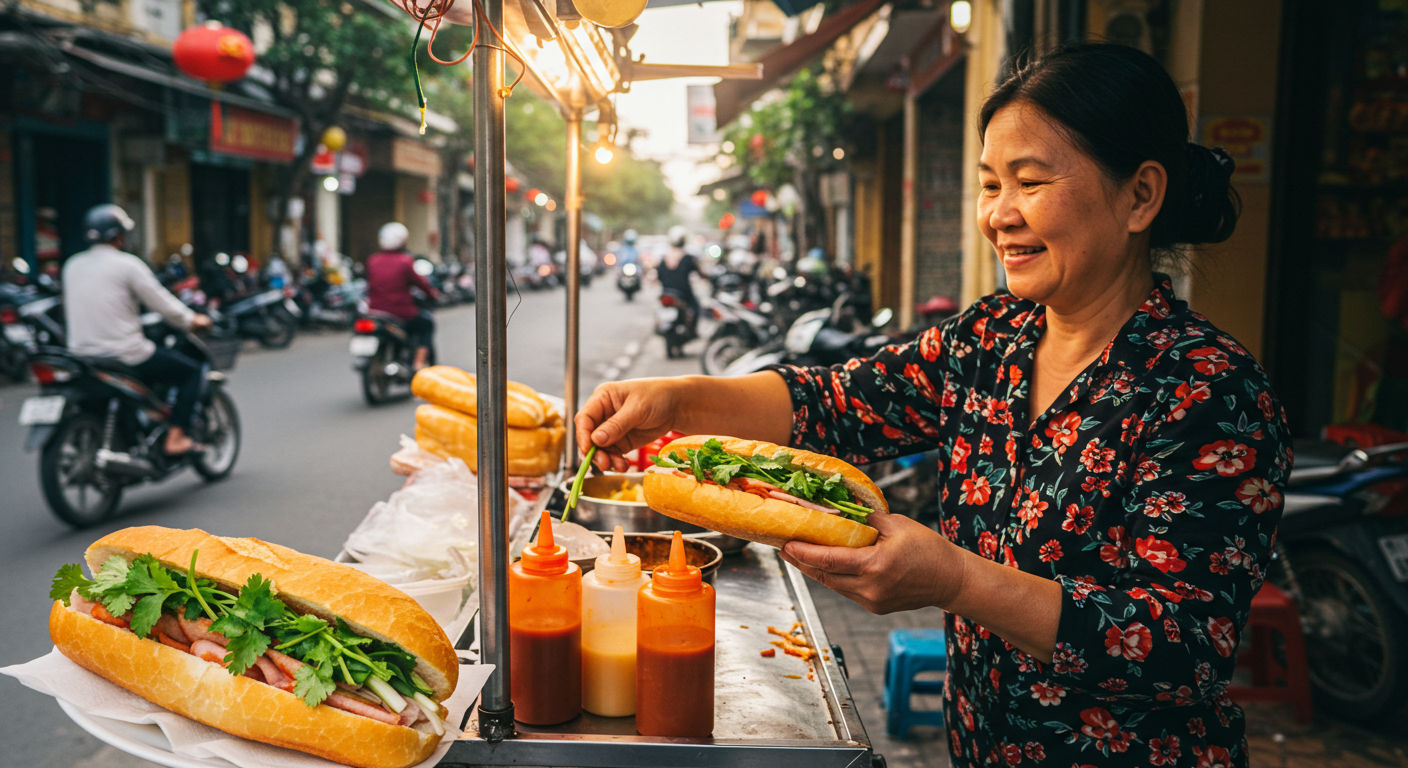
For the best texture, the vegetables should be cut into thin matchsticks and pickled just long enough to soften slightly while retaining their crispness. The ideal pickle has a bright flavor that doesn't overwhelm the other ingredients but provides a refreshing contrast.
Fresh Elements: Herbs and Vegetables
Fresh herbs and vegetables add brightness, color, and complexity to bánh mì. They provide a counterpoint to the rich proteins and creamy spreads.
Cilantro (Coriander)
Fresh cilantro sprigs are a must-have topping for authentic bánh mì. The herb's bright, citrusy flavor and distinctive aroma cut through the richness of the meats and pâté. In Vietnam, vendors are generous with cilantro, often adding whole sprigs rather than chopped leaves.
Cucumber
Thinly sliced cucumber adds a cool, refreshing crunch that complements the warm, savory elements of the sandwich. The mild flavor and high water content provide a palate-cleansing effect between bites of rich protein and spicy chili.
Scallions (Green Onions)
Thinly sliced scallions or scallion oil (dầu hành) add a mild onion flavor without the harshness of raw onion. The slight pungency works particularly well with grilled meat fillings.
Additional Herbs
Regional variations may include other herbs such as:
- Vietnamese coriander (rau răm) - with a more peppery flavor than regular cilantro
- Thai basil - adding a hint of anise-like sweetness
- Mint - providing a cooling effect, especially welcome in spicier versions
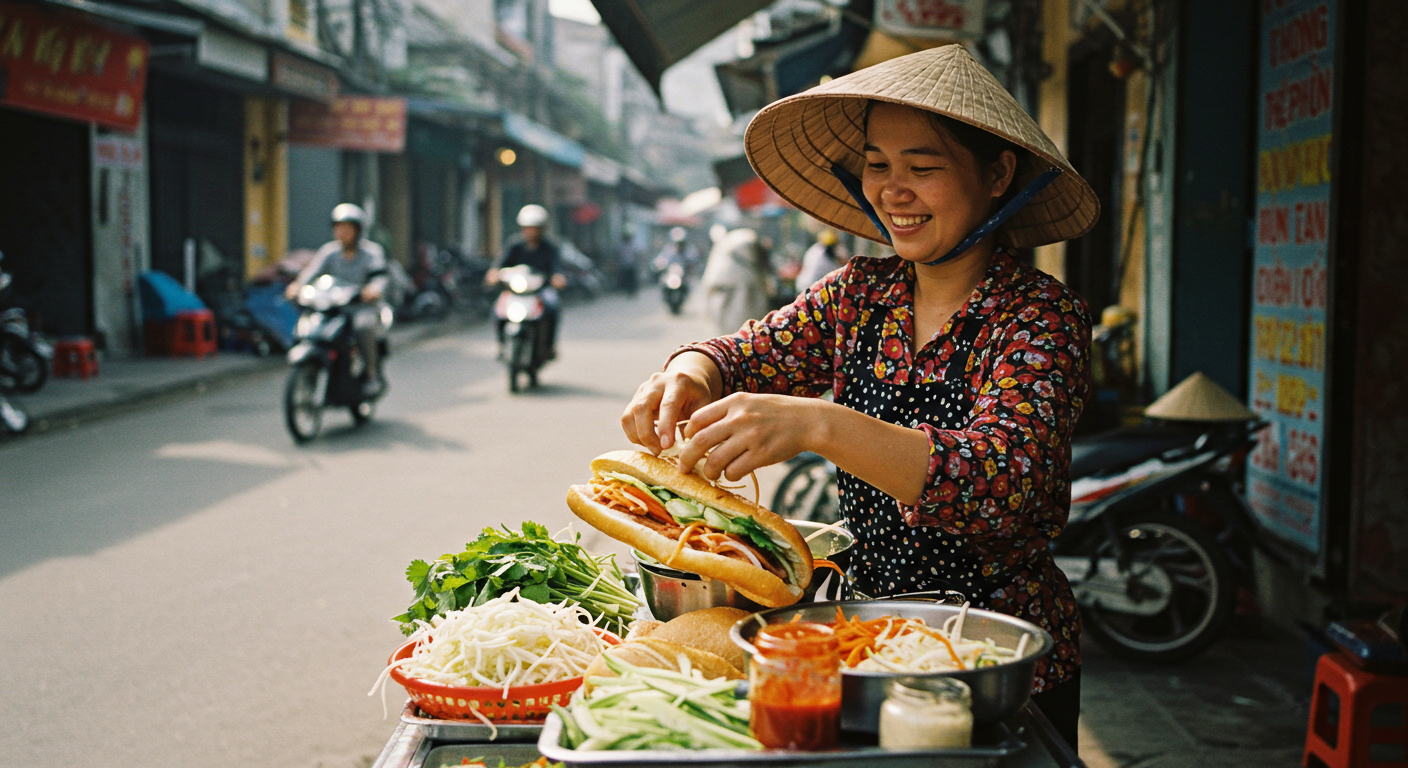
The Heat Factor: Chili Options
Spice is a personal preference, but most traditional bánh mì includes some form of chili heat to balance the rich, savory elements.
Fresh Chilies
Thinly sliced bird's eye chilies or jalapeños provide direct heat and fresh flavor. In Vietnam, vendors will ask "Có ớt không?" ("Would you like chili?") and adjust the spice level to your preference.
Chili Sauce
Many bánh mì shops offer house-made chili sauce or commercial options like Sriracha. These sauces blend heat with other flavors like garlic, vinegar, and sugar for a more complex spice experience.
Chili Oil
Some regional variations use chili oil, which adds both heat and richness. This is more common in northern Vietnam, where the influence of Chinese cuisine is stronger.
Creamy Elements: Spreads and Sauces
The creamy components of bánh mì bind the ingredients together and add richness that balances the fresh, crunchy elements.
Mayonnaise
Vietnamese mayonnaise tends to be lighter and slightly sweeter than Western versions. It's often spread generously on both sides of the bread, creating a moisture barrier that prevents the bread from becoming soggy while adding richness.
Pâté
Liver pâté, a direct inheritance from French colonial influence, adds a luxurious, savory depth to bánh mì. The smooth, spreadable texture contrasts beautifully with the crunchy vegetables and crisp bread.
Butter
A light spread of butter is sometimes used in addition to or instead of mayonnaise, especially in northern Vietnam. This adds richness and helps protect the bread from moisture.
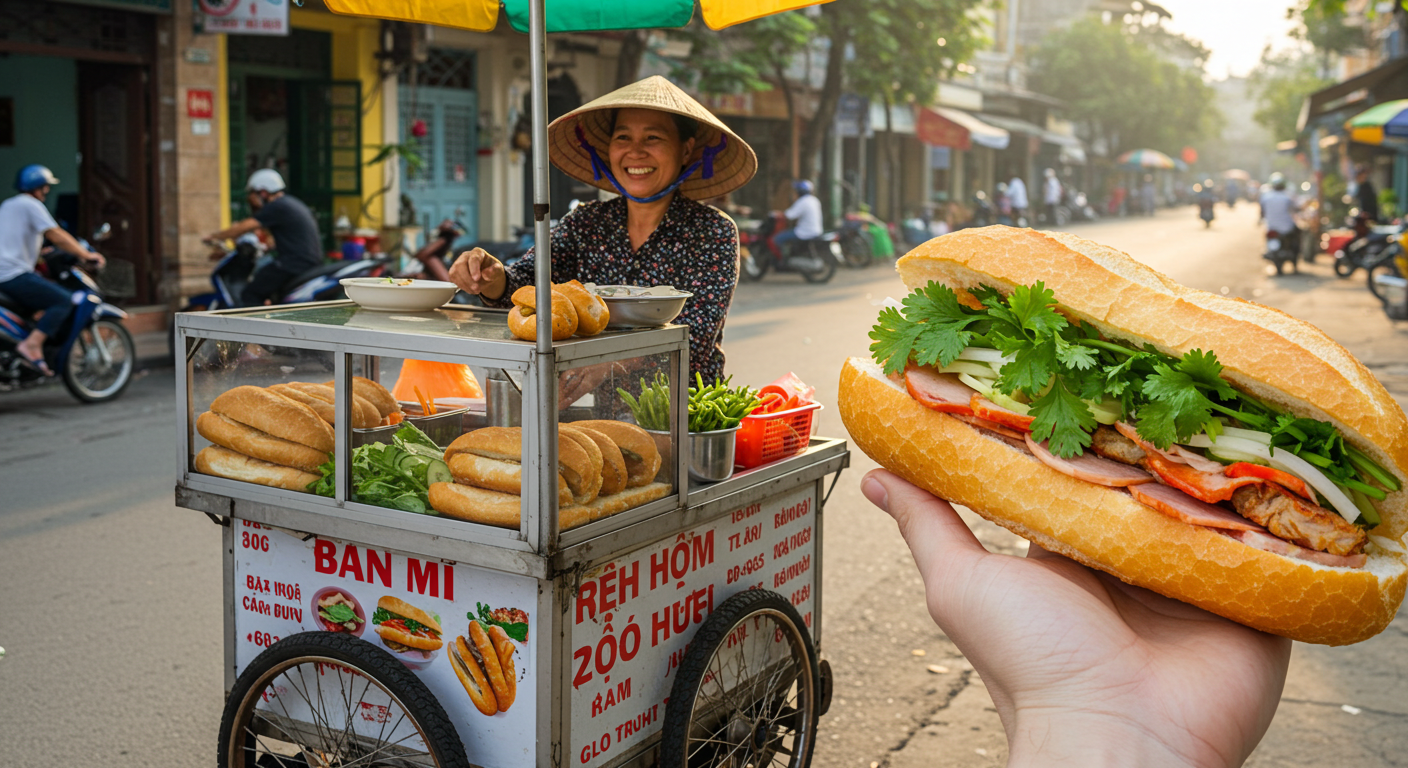
Umami Boosters: Savory Sauces
Several sauces and condiments add depth and complexity to bánh mì, enhancing the overall flavor profile.
Maggi Seasoning Sauce
This dark, concentrated sauce is a secret weapon in many bánh mì shops. Just a few drops add an intense umami flavor that ties all the ingredients together. Originally Swiss, Maggi sauce became popular throughout Vietnam during the colonial era and is now considered essential to authentic bánh mì.
Soy Sauce
Sometimes used as an alternative to Maggi, a light drizzle of soy sauce adds savory depth without overwhelming other flavors.
Fish Sauce (Nước Mắm)
While not always used directly as a condiment, fish sauce often appears in marinades for the protein fillings or in dipping sauces served alongside bánh mì. Its distinctive umami flavor is fundamental to Vietnamese cuisine.
House Special Sauces
Many famous bánh mì vendors have their own secret sauce recipes that combine multiple ingredients. These proprietary blends often become signature elements that distinguish one shop from another.
Regional Topping Variations
As bánh mì travels from north to south in Vietnam, the toppings and condiments show regional preferences:
Northern Style (Hanoi)
Northern bánh mì tends to feature fewer toppings, focusing on quality over quantity. Expect modest amounts of pickled vegetables, minimal herbs, and restrained use of chili. Butter is more common here than in the south. For more details on how bánh mì differs across Vietnam, read our guide to regional bánh mì variations.
Central Style (Hue, Da Nang, Hoi An)
Central Vietnamese bánh mì often features more herbs and spicier chili options. The pickled vegetables might include additional ingredients like pickled papaya. Special sauces are a hallmark of central Vietnam's famous bánh mì shops.
Southern Style (Ho Chi Minh City)
Southern bánh mì is known for abundance – expect generous portions of all toppings, especially herbs and pickled vegetables. The overall flavor profile tends to be brighter and more complex, with a greater variety of textures. Despite the abundance of ingredients, southern bánh mì remains remarkably affordable, as detailed in our bánh mì price guide.
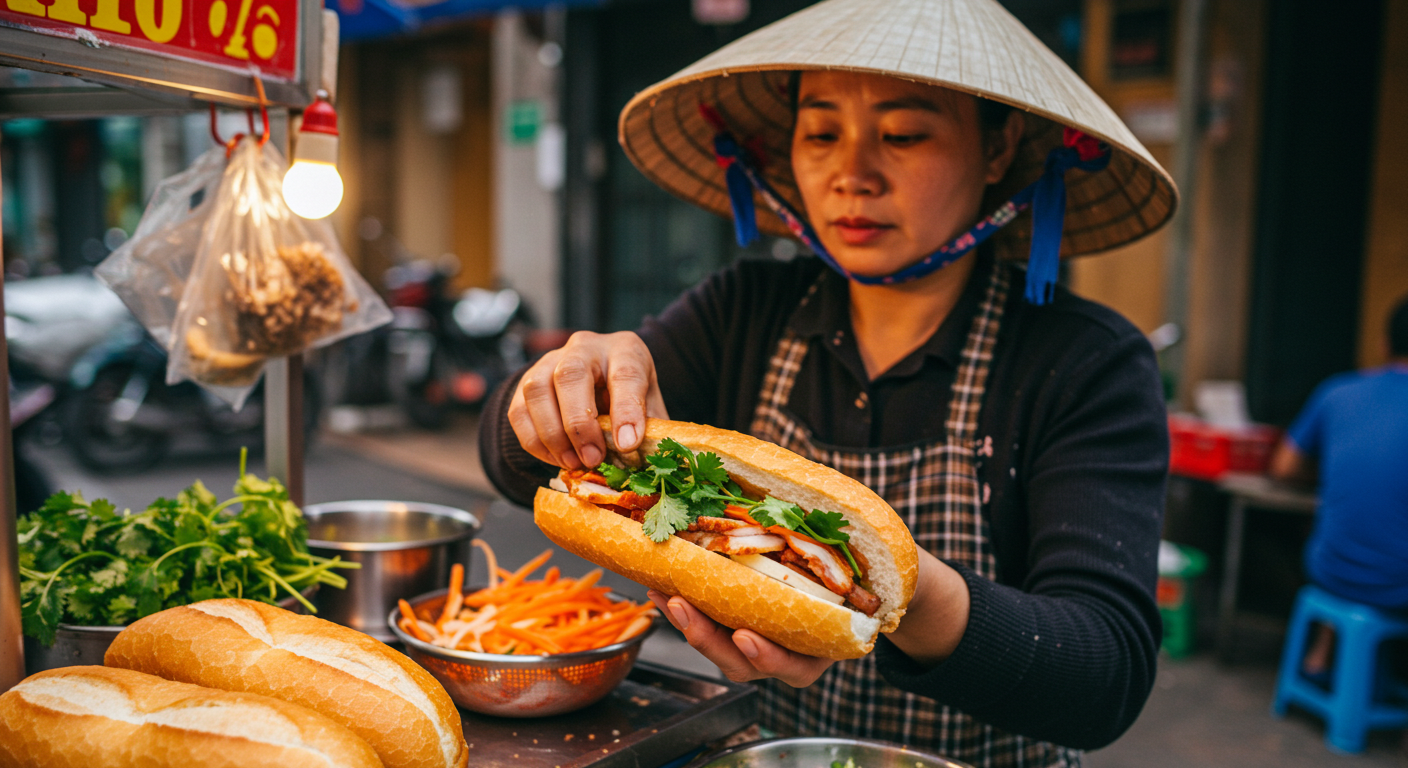
Modern and Fusion Toppings
As bánh mì has gained international popularity, creative chefs have introduced new toppings while respecting the sandwich's essential balance:
- Pickled red onions - adding color and a different kind of tang
- Avocado - providing creaminess in vegetarian versions
- Kimchi - in Korean-Vietnamese fusion versions
- Mango - adding sweetness that works well with spicy fillings
- Crispy shallots - for additional texture and flavor
- Microgreens - in upscale interpretations
The Art of Bánh Mì Assembly
The order and proportion of toppings matter as much as the ingredients themselves. Traditional bánh mì assembly follows a specific sequence:
- Spread mayonnaise, butter, and/or pâté on both sides of the bread
- Add protein fillings in an even layer
- Drizzle with Maggi sauce or other umami boosters
- Add cucumber slices
- Top with pickled vegetables
- Add chili slices according to preference
- Finish with a generous handful of cilantro and other herbs
This sequence ensures that the creamy elements protect the bread, while the vegetables and herbs remain fresh and vibrant.
Final Thoughts
While the protein filling might be the star of a bánh mì, it's the supporting cast of toppings and condiments that creates the sandwich's distinctive character. The perfect balance of pickled, fresh, spicy, creamy, and savory elements makes bánh mì greater than the sum of its parts.
Whether you prefer a traditional approach or enjoy creative interpretations, respecting this fundamental balance is key to creating a truly satisfying bánh mì experience. The next time you bite into this iconic Vietnamese sandwich, take a moment to appreciate how each carefully chosen topping contributes to the harmony of flavors and textures.

